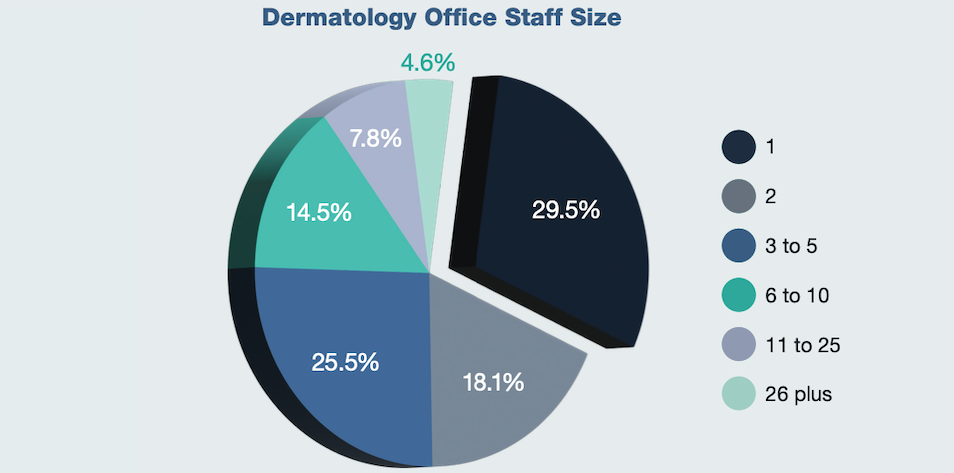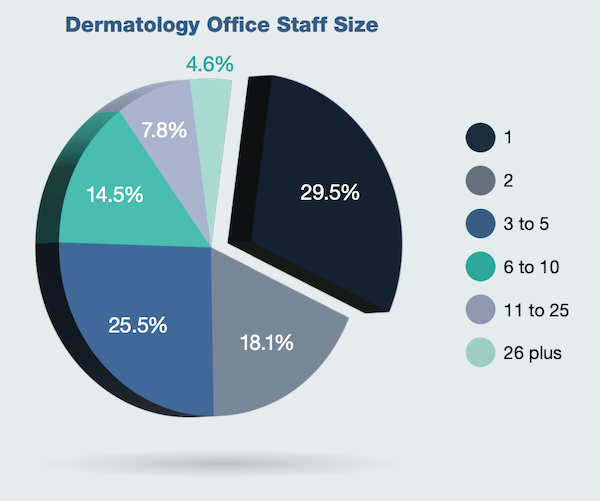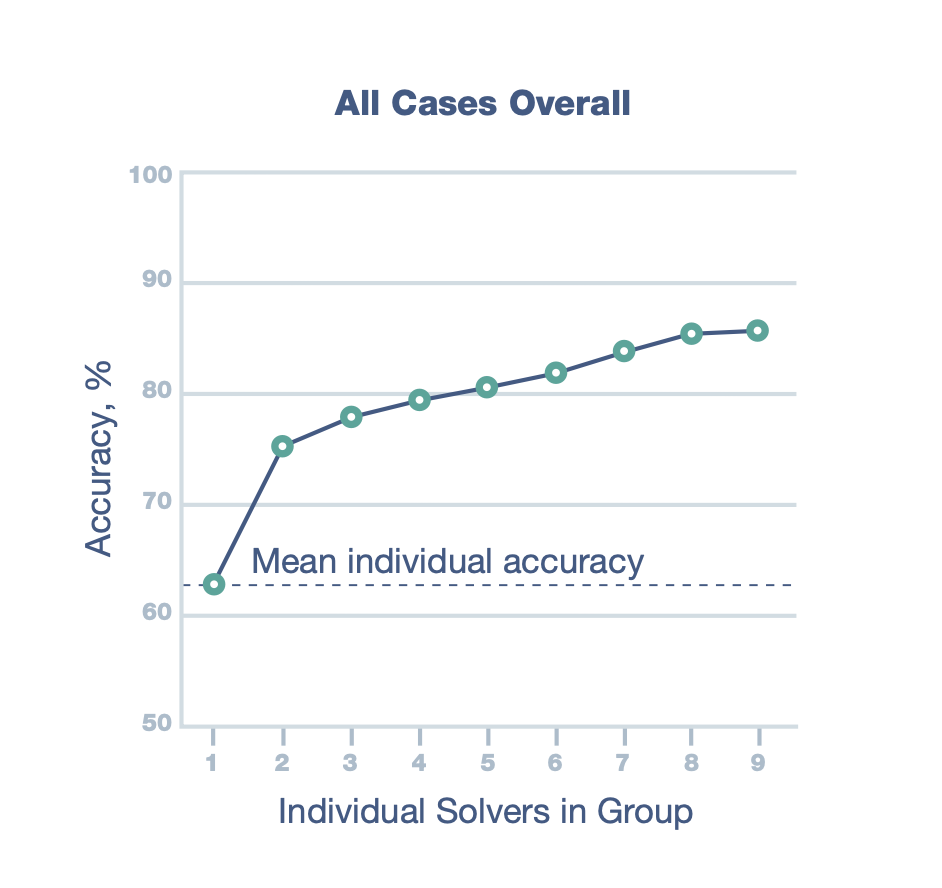
Are you looking to specialize in dermatology? Currently a dermatologist curious about the state of your industry? Want to see how you compare to other independent physicians and practices? Here are some of the top dermatology statistics you should know.
Dermatology Statistics: Industry & Demographics
- The dermatology market is predicted to be valued at $2.04 billion in 2030.
- There are more than 11,000 practicing dermatologists in the United States.
- Demand for dermatologists is expected to increase, with 72,500 jobs filled by 2029 due to an annual increase of 2.15% over the next few years. (see chart)
- 51% of dermatologists are women, and 49% are men.
- California (32,969 businesses), Texas (22,489 businesses), and Florida (20,908 businesses) are the states with the largest number of dermatology businesses in the U.S.

Dermatology Statistics: Dermatology Practice
- Approximately one-third of dermatologists are solo practitioners.
- The number of solo practitioners in dermatology is almost double that of any other specialty.
- Most dermatologists work in independent practices, and nearly three-fourths work in practices with five or fewer physicians (see chart).
- Acne, atopic dermatitis, and hair loss are the top three conditions treated by dermatologists in the U.S.
- The number of individuals needing treatment for skin disease will increase as the population ages. Based on current projections, in 2060, approximately 95 million Americans will be 65 and older, and nearly 50% of people 65+ experience skin disease at a rate of 2.2 per person.

Dermatology Statistics: Collaboration
- 75% of medical students now receive some form of team training.
- Diagnostic accuracy significantly improves with increased collective intelligence compared to the diagnostic determinations made by individuals: 85.6% accuracy for a group of nine versus 62.5% accuracy for individuals (see chart).
- Improved healthcare collaboration has been cited as a key strategy for healthcare reform as it has been shown to improve patient outcomes.
- Collaboration is particularly important in dermatology, given the rate of comorbidities related to skin disease. One study found adults who have had shingles have an increased risk of stroke and heart attack — at 35% and 59%, respectively — compared to those who have not had shingles.
- 40% of healthcare professionals on Figure 1 who are unable to solve patient cases on their own find a resolution through peer-to-peer collaboration on the platform.

Published October 17, 2022
Join Figure 1!
Explore real patient cases, increase your collaboration opportunities, and earn free CME credits


